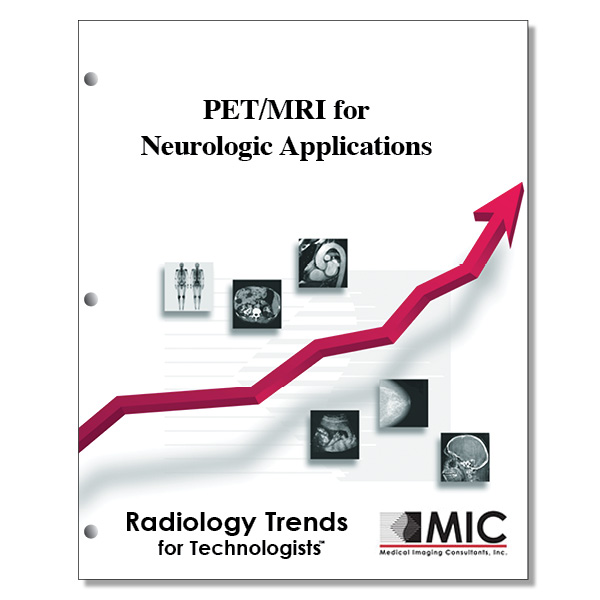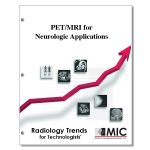

PET/MRI for Neurologic Applications
Advantages of PET/MRI are presented, specifically noting how the novel imaging modality may be beneficial in neurologic applications.
Course ID: Q00392 Category: Radiology Trends for Technologists Modalities: MRI, Nuclear Medicine, PET2.75 |
Satisfaction Guarantee |
$29.00
- Targeted CE
- Outline
- Objectives
Targeted CE per ARRT’s Discipline, Category, and Subcategory classification for enrollments starting after August 22, 2024:
[Note: Discipline-specific Targeted CE credits may be less than the total Category A credits approved for this course.]
Computed Tomography: 0.25
Procedures: 0.25
Head, Spine, and Musculoskeletal: 0.25
Magnetic Resonance Imaging: 1.25
Patient Care: 0.25
Patient Interactions and Management: 0.25
Procedures: 1.00
Neurological: 1.00
Nuclear Medicine Technology: 1.25
Procedures: 1.25
Other Imaging Procedures: 1.25
Registered Radiologist Assistant: 0.75
Patient Care: 0.25
Pharmacology: 0.25
Procedures: 0.50
Neurological, Vascular, and Lymphatic Sections: 0.50
Outline
- Introduction
- Methodologic and Scientific Advantages
- MRI-Based PET Motion Correction
- Partial-Volume Effect (PVE) Correction
- Image-Based Radiotracer AIF Estimation
- Technique Cross-Calibration and Validation
- Advantages of Simultaneous PET/MRI in Clinical and Research Applications
- Brain Tumors
- Dementia/Neurodegeneration
- Stroke/Cerebrovascular Disorders
- Epilepsy
- Neurobiology of Brain Activation
- Translational Research
- Conclusion
Objectives
Upon completion of this course, students will:
- identify the indicators of changes in brain hemodynamics
- recognize a common source of motion during neurologic PET imaging
- identify the categories of uncooperative patients that can benefit from simultaneous PET/MRI
- understand the factors that affect tissue activity concentration on PET images
- recognize the brain structure most often affected by partial volume effects
- identify the factor affecting the accuracy of PVE correction that is eliminated by simultaneous PET/MRI acquisition
- identify the gold standard for determining the arterial input function
- identify the gold standard for measuring cerebral blood flow
- describe the performance of functional MRI using BOLD imaging sequences
- explain the neurologic concept of the brain baseline state
- indicate the MRI techniques being used to investigate brain connectivity
- identify the PET tracer used to measure metabolism
- describe the magnetic properties of gadolinium-based contrast agents
- list the types of MR images suitable for GBCA enhancement
- explain the semi-quantitative measurement cerebral blood flow
- explain the semi-quantitative measurement cerebral blood volume
- describe the magnetic properties of oxyhemoglobin and deoxyhemoglobin
- list ways that MRI assesses brain anatomy
- list the factors that affect contrast enhancement of MR images
- identify the PET tracer used to evaluate cellular proliferation
- identify the PET tracer used to evaluate tissue hypoxia
- recognize the most aggressive and fatal brain tumor
- understand barriers preventing the use of novel MRI techniques in the evaluation of cognitive impairment or suspected dementia
- identify the PET tracer used to evaluate amyloid deposition
- identify the gold standard for noninvasively identifying brain regions associated with ischemic stroke
- list the categories of PET tracers that are most useful in the acute phase of ischemic stroke
- indicate the time window during which patient are most likely to benefit from therapeutic interventions following ischemic stroke
- list the benefits to patients from the use of integrated PET/MRI systems
- describe the fastest-acting cells in the human body
- indicate the physical half-life of the isotope carbon-11
